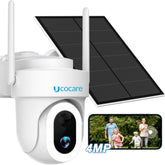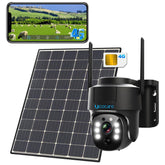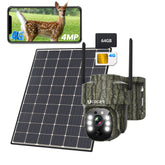What is NVR,DVR, and NAS, and how to choose?
What is NVR,DVR, and NAS, and how to choose?
In the realm of surveillance and data storage of home security cameras, three common terms frequently surface: NVR, DVR, and NAS. Each serves a distinct purpose in managing and storing data, yet they often cause confusion due to their overlapping functionalities. Let’s delve into each one to understand their unique characteristics, differences, and considerations for choosing the right solution.

NVR(Network Video Recorder)
What is an NVR? NVR stands for Network Video Recorder. It is a specialized device used for recording video footage from IP cameras. NVRs are designed to work within IP-based surveillance systems, where cameras are connected to the network. They typically have built-in software that allows users to manage and access recorded footage remotely via a web browser or dedicated software.
DVR(Digital Video Recorder)
DVR stands for Digital Video Recorder. Unlike NVRs, DVRs are designed for analog surveillance systems. They are capable of recording video footage from analog cameras by converting the analog signal to digital format for storage. DVRs often come with software for video management and playback, but they are not typically designed for remote access over the internet without additional networking hardware or configurations.
NAS(Network Attached Storage)
NAS stands for Network Attached Storage. It is a storage device connected to a network that allows multiple users and devices to store and retrieve data from a centralized location. NAS devices are not limited to storing surveillance footage; they can also be used for various data storage needs such as file sharing, backup, and multimedia streaming. Some NAS devices offer surveillance-specific features and software, allowing them to function as a storage solution for NVRs or DVRs.
The differences of NVR, DVR, NAS

1.Camera Compatibility
NVRs are compatible with IP cameras, while DVRs work with analog cameras. NAS devices can store footage from both IP and analog cameras but require compatible recording software.
2.Remote Access
NVRs typically offer easier remote access to video footage via the internet due to their network-centric design. DVRs may require additional configurations for remote access. NAS devices can provide remote access to stored footage depending on the capabilities of the installed surveillance software.
3.Functionality
NVRs and DVRs are specialized devices primarily focused on video recording and management. NAS devices, on the other hand, offer broader storage capabilities beyond surveillance footage, making them suitable for multi-purpose storage needs.
How to choose?
1.Consider Camera Type
Determine whether your surveillance system will use IP cameras or analog cameras, as this will dictate whether you need an NVR, DVR, or a NAS with compatible recording software.
2.Remote Access Needs
If remote access to video footage is a priority, opt for an NVR with built-in remote access capabilities or ensure that your chosen DVR or NAS solution supports remote access features.
3.Storage Requirements
Assess your storage needs based on factors such as the number of cameras, resolution of footage, retention period, and any additional data storage requirements beyond surveillance footage. Choose a solution with sufficient storage capacity to meet your needs.
4.Scalability
Consider future expansion and scalability requirements. Choose a solution that allows for easy integration of additional cameras or storage capacity as your surveillance needs grow.
In conclusion, NVRs, DVRs, and NAS devices serve distinct roles in surveillance and data storage. Understanding their differences and considering factors such as camera compatibility, remote access capabilities, storage requirements, and scalability will help you choose the right solution for your surveillance needs. Whether you opt for an NVR, DVR, or NAS, ensuring compatibility and functionality with your existing infrastructure is essential for a seamless surveillance experience.











